Baking soda cleaning hacks are about to become your new best friend! Seriously, forget those expensive, chemical-laden cleaners that promise the world but often fall short. I’m going to let you in on a little secret: that humble box of baking soda sitting in your pantry is a powerhouse of cleaning potential, just waiting to be unleashed.
For generations, baking soda, also known as sodium bicarbonate, has been a staple in homes worldwide. From ancient Egyptians using it in cleaning rituals to our grandmothers relying on it for everything from baking to deodorizing, its versatility is undeniable. It’s a testament to simple, effective solutions that stand the test of time.
But why should you care about baking soda cleaning hacks? Well, in today’s world, we’re all looking for ways to save money, reduce our environmental impact, and create a healthier living space. And that’s where baking soda truly shines. It’s non-toxic, biodegradable, and incredibly affordable. Plus, it can tackle everything from stubborn stains to lingering odors. I’m excited to share some of my favorite baking soda cleaning hacks that will transform your cleaning routine and leave your home sparkling – naturally!
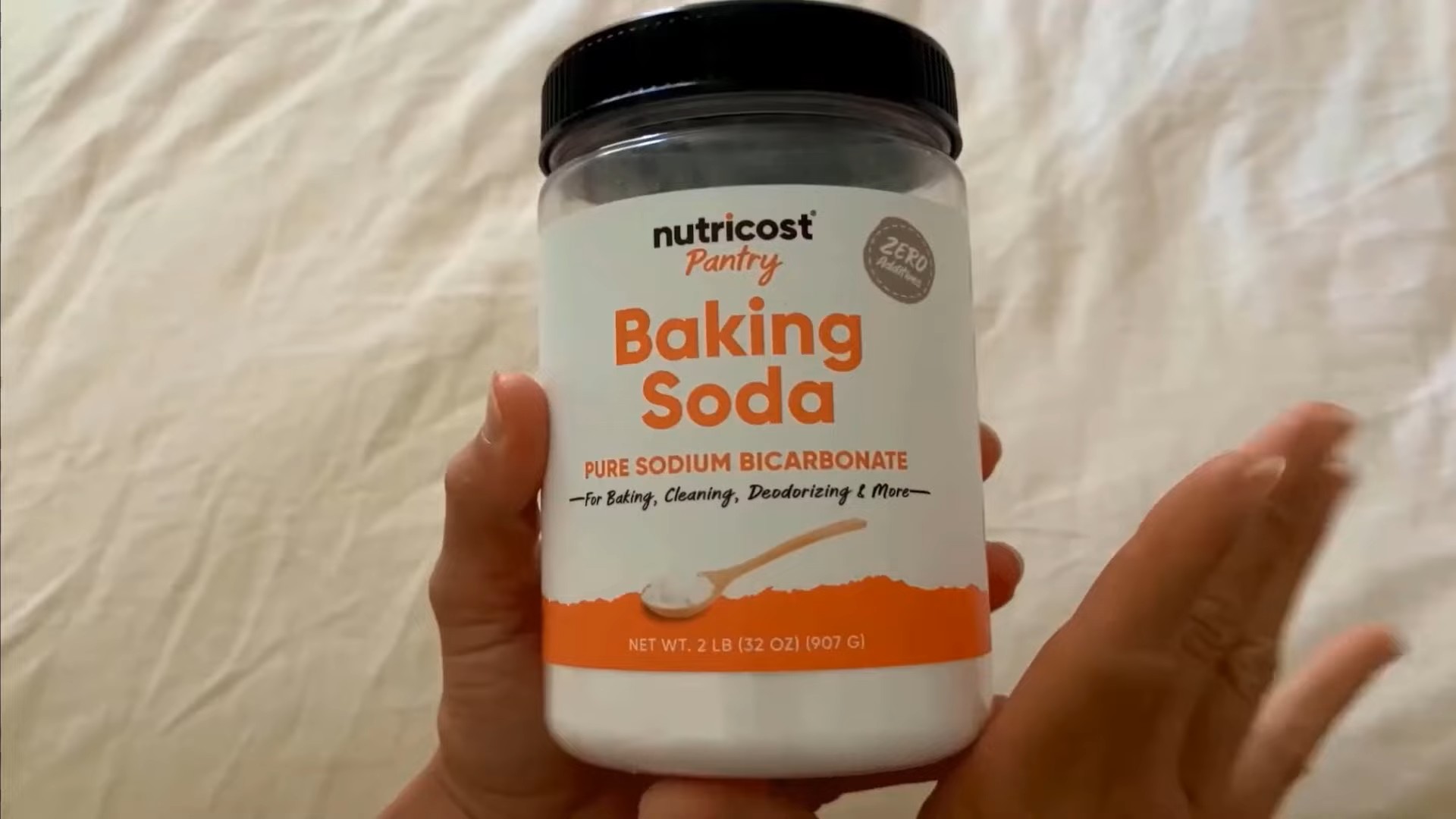
Unlocking the Cleaning Power of Baking Soda: DIY Hacks You Need to Know
Baking soda, also known as sodium bicarbonate, is a true cleaning superhero hiding in plain sight! It’s inexpensive, non-toxic, and incredibly versatile. I’ve been using it for years, and I’m constantly amazed by its cleaning prowess. Forget harsh chemicals; let’s dive into some amazing DIY baking soda cleaning hacks that will leave your home sparkling.
Baking Soda: Your All-Purpose Cleaning Agent
Before we jump into the specific hacks, let’s quickly understand why baking soda is so effective. It’s a mild alkali, which means it can react with acids to neutralize them. This makes it fantastic for removing odors and dissolving dirt and grease. Plus, its slightly abrasive texture makes it a gentle scrubbing agent.
Hack 1: Deodorizing Your Refrigerator
A smelly fridge is a common problem, but baking soda offers a simple solution.
What you’ll need:
* Baking soda
* A small, open container (like a bowl or jar)
Step-by-step instructions:
1. Prepare the baking soda: Simply pour about half a cup of baking soda into your chosen container.
2. Place it in the fridge: Put the open container of baking soda in the back of your refrigerator. This allows it to absorb odors effectively.
3. Replace regularly: Replace the baking soda every month or so, or more frequently if you notice strong odors. You can even use the old baking soda for other cleaning tasks around the house!
Hack 2: Cleaning Your Oven Without Harsh Chemicals
Oven cleaning is notoriously unpleasant, but baking soda makes it much easier and safer.
What you’ll need:
* Baking soda
* Water
* Spray bottle
* Spatula or scraper
* Damp sponge or cloth
Step-by-step instructions:
1. Prepare the baking soda paste: In a bowl, mix about half a cup of baking soda with enough water to form a thick paste. The consistency should be spreadable but not too runny.
2. Coat the oven: Spread the baking soda paste all over the interior surfaces of your oven, avoiding the heating elements. Pay special attention to areas with baked-on grease and grime.
3. Let it sit overnight: This is the key! Allow the baking soda paste to sit in the oven for at least 12 hours, or preferably overnight. This gives it time to loosen the grime.
4. Scrub and scrape: The next day, use a spatula or scraper to remove as much of the dried baking soda paste as possible. It should come off fairly easily, taking the grime with it.
5. Wipe clean: Use a damp sponge or cloth to wipe away any remaining baking soda residue. You may need to rinse the sponge frequently.
6. Optional: Vinegar spray: For stubborn spots, you can spray a little vinegar onto the baking soda residue before wiping. The vinegar will react with the baking soda, creating a fizzing action that helps to lift the grime.
7. Final wipe down: Give the oven one last wipe down with a clean, damp cloth to ensure all traces of baking soda are gone.
Hack 3: Unclogging Drains Naturally
Forget harsh drain cleaners! Baking soda and vinegar can work wonders for unclogging slow drains.
What you’ll need:
* Baking soda
* White vinegar
* Hot water
Step-by-step instructions:
1. Pour in the baking soda: Pour about one cup of baking soda down the drain.
2. Add the vinegar: Immediately follow with one cup of white vinegar.
3. Let it fizz: The mixture will fizz and bubble. Let it sit for about 30 minutes. This reaction helps to break down the clog.
4. Flush with hot water: After 30 minutes, flush the drain with a pot of boiling water. Be careful when handling boiling water!
5. Repeat if necessary: If the drain is still slow, repeat the process. For particularly stubborn clogs, you may need to repeat it several times.
Hack 4: Cleaning Grout Lines
Dirty grout lines can make your entire bathroom look dingy. Baking soda can help restore them to their former glory.
What you’ll need:
* Baking soda
* Water
* Old toothbrush or grout brush
* Spray bottle (optional)
Step-by-step instructions:
1. Make a baking soda paste: Mix baking soda with enough water to form a thick paste.
2. Apply to grout lines: Apply the paste to the grout lines, covering them completely.
3. Scrub: Use an old toothbrush or grout brush to scrub the grout lines thoroughly. Apply some elbow grease!
4. Let it sit: Allow the paste to sit on the grout lines for about 10-15 minutes.
5. Rinse: Rinse the grout lines with water. You can use a spray bottle to make rinsing easier.
6. Dry: Wipe the area dry with a clean cloth.
Hack 5: Polishing Silverware
Tarnished silverware can be easily restored with baking soda.
What you’ll need:
* Baking soda
* Aluminum foil
* Boiling water
* Large bowl or pot
* Soft cloth
Step-by-step instructions:
1. Line the bowl: Line the bottom of a large bowl or pot with aluminum foil, shiny side up.
2. Add baking soda: Add about one tablespoon of baking soda per cup of water to the bowl.
3. Pour in boiling water: Carefully pour boiling water into the bowl.
4. Submerge the silverware: Place the tarnished silverware in the bowl, making sure it touches the aluminum foil.
5. Let it sit: Let the silverware sit in the solution for 2-5 minutes, depending on the level of tarnish. You should see the tarnish start to disappear.
6. Remove and rinse: Remove the silverware from the bowl and rinse it thoroughly with water.
7. Dry and polish: Dry the silverware with a soft cloth. If any tarnish remains, you can gently polish it with a baking soda paste.
Hack 6: Freshening Carpets and Rugs
Baking soda is a natural deodorizer that can freshen up your carpets and rugs.
What you’ll need:
* Baking soda
* Vacuum cleaner
* Essential oil (optional)
Step-by-step instructions:
1. Prepare the baking soda: If you want to add a scent, mix a few drops of your favorite essential oil (like lavender or lemon) with the baking soda.
2. Sprinkle on the carpet: Sprinkle a generous amount of baking soda evenly over the carpet or rug.
3. Let it sit: Allow the baking soda to sit on the carpet for at least 30 minutes, or even longer for heavily soiled areas. Overnight is ideal.
4. Vacuum thoroughly: Vacuum the carpet thoroughly to remove all the baking soda.
Hack 7: Cleaning Burnt Food from Pots and Pans
Burnt food stuck to the bottom of pots and pans is a common kitchen nightmare. Baking soda can help loosen the burnt residue.
What you’ll need:
* Baking soda
* Water
* Dish soap
* Scrubbing sponge or pad
Step-by-step instructions:
1. Coat the bottom of the pan: Sprinkle a generous amount of baking soda over the burnt food in the pot or pan.
2. Add water: Add enough water to cover the burnt food.
3. Bring to a boil: Bring the water to a boil on the stovetop.
4. Simmer: Reduce the heat and simmer for about 10-15 minutes.
5. Let it cool: Allow the water to cool slightly.
6. Scrub: Use a scrubbing sponge or pad to scrub away the loosened burnt food. You may need to use some elbow grease.
7. Wash as usual: Wash the pot or pan with dish soap and water as usual.
Hack 8: Removing Stains from Coffee Mugs
Coffee and tea stains can make your mugs look old and dirty. Baking soda can easily remove these stains.
What you’ll need:
* Baking soda
* Water
* Sponge or cloth
Step-by-step instructions:
1. Make a baking soda paste: Mix baking soda with a little water to form a paste.
2. Apply to stains: Apply the paste to the coffee or tea stains inside the
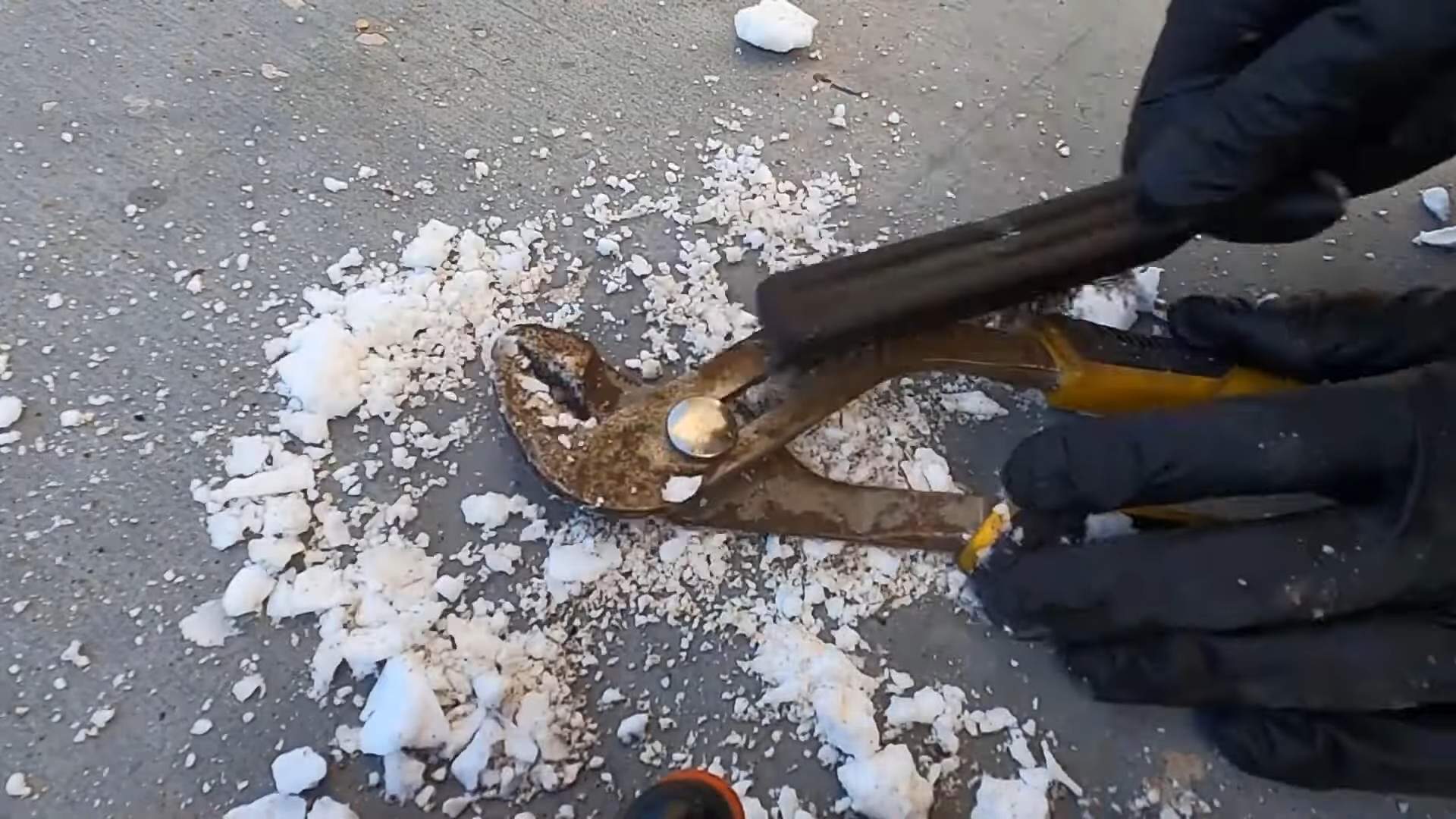
Conclusion
So, there you have it! Unlocking the incredible cleaning power of baking soda is not just a trend; it’s a game-changer for your home. We’ve explored a range of simple yet effective baking soda cleaning hacks that can tackle everything from stubborn stains to lingering odors. Why spend a fortune on harsh chemicals when this humble pantry staple can deliver sparkling results?
The beauty of these DIY solutions lies in their simplicity and versatility. You’re not just cleaning; you’re creating a healthier, more eco-friendly environment for yourself and your family. Baking soda is non-toxic, gentle on surfaces, and incredibly cost-effective. It’s a win-win-win!
But the real magic happens when you start experimenting and tailoring these hacks to your specific needs. Feeling adventurous? Try adding a few drops of your favorite essential oil to your baking soda paste for an extra boost of freshness. Lavender, lemon, or tea tree oil can not only enhance the cleaning power but also leave a delightful aroma in your home. For tougher stains, consider pre-treating the area with a baking soda paste and letting it sit for a few hours before scrubbing.
Don’t be afraid to get creative with your application methods, either. An old toothbrush is perfect for scrubbing grout, while a microfiber cloth can gently polish delicate surfaces. Remember to always test your baking soda solution on an inconspicuous area first, especially when dealing with painted or varnished surfaces.
Beyond the specific hacks we’ve discussed, baking soda can also be used as a natural deodorizer for carpets, upholstery, and even your refrigerator. Simply sprinkle a generous amount of baking soda over the surface, let it sit for at least 15 minutes (or even overnight), and then vacuum it up. Say goodbye to unpleasant odors and hello to a fresh, clean space!
We truly believe that incorporating these baking soda cleaning hacks into your routine will transform the way you approach household chores. It’s not just about cleaning; it’s about embracing a more sustainable and mindful way of living.
Now, it’s your turn! We encourage you to try these baking soda cleaning hacks and discover the amazing results for yourself. Share your experiences, tips, and variations in the comments below. We’re eager to hear how baking soda has helped you conquer your cleaning challenges and create a cleaner, healthier home. Let’s build a community of baking soda enthusiasts and share the secrets to a sparkling clean life!
Frequently Asked Questions (FAQs)
Is baking soda safe to use on all surfaces?
While baking soda is generally considered safe and gentle, it’s always a good idea to test it on an inconspicuous area first, especially when dealing with delicate or painted surfaces. Baking soda is mildly abrasive, so excessive scrubbing on certain materials could potentially cause scratches. Avoid using baking soda on aluminum, as it can cause discoloration. Also, be cautious when using it on waxed or polished surfaces, as it may dull the finish. When in doubt, consult the manufacturer’s instructions for the specific surface you’re cleaning.
Can I mix baking soda with vinegar for cleaning?
Mixing baking soda and vinegar creates a chemical reaction that produces carbon dioxide and water. While this reaction can be fun to watch (think science fair volcano!), it’s not necessarily the most effective cleaning method. The initial fizzing action might help loosen some grime, but the resulting solution is essentially just saltwater. Furthermore, the vinegar neutralizes the baking soda, diminishing its cleaning power. It’s generally more effective to use baking soda and vinegar separately, taking advantage of their individual properties. For example, you can use baking soda to scrub a surface and then follow up with a vinegar rinse.
How long does baking soda last?
Unopened baking soda has a virtually indefinite shelf life when stored in a cool, dry place. Once opened, it’s best to use it within a year or two to ensure optimal effectiveness. To test if your baking soda is still active, pour a small amount of vinegar into a bowl and add a spoonful of baking soda. If it fizzes vigorously, it’s still good to use. If the fizzing is weak or nonexistent, it’s time to replace it. Even if it’s past its prime for baking or cleaning, you can still use older baking soda as a deodorizer in your refrigerator or freezer.
What are some other uses for baking soda besides cleaning?
Baking soda is a true multi-tasker! In addition to its cleaning prowess, it can also be used for a variety of other purposes. It’s a common ingredient in baking, helping to leaven cakes and cookies. It can be used as a natural antacid to relieve heartburn and indigestion. It can also be used to soothe insect bites and sunburns. Some people even use baking soda as a natural toothpaste or mouthwash. With its versatility and affordability, baking soda is a must-have item in every household.
Can baking soda remove tough stains like coffee or red wine?
Baking soda can be effective at removing many types of stains, including coffee and red wine, especially when used promptly. For coffee stains, create a paste of baking soda and water and apply it to the stain. Let it sit for a few minutes, then scrub gently and rinse. For red wine stains, blot up as much of the wine as possible with a clean cloth. Then, cover the stain with a generous amount of baking soda and let it sit overnight. The baking soda will absorb the remaining wine. Vacuum up the baking soda the next day. For older or more stubborn stains, you may need to repeat the process or try a combination of baking soda and other cleaning agents, such as hydrogen peroxide.
Is baking soda safe for septic systems?
Yes, baking soda is generally considered safe for septic systems. Unlike harsh chemical cleaners, baking soda is a natural substance that won’t harm the beneficial bacteria in your septic tank. In fact, it can even help to balance the pH levels in your septic system, promoting healthy bacterial activity. Using baking soda for cleaning and deodorizing is a great way to maintain a healthy septic system while also keeping your home clean and fresh.
How can I use baking soda to freshen my refrigerator?
Baking soda is an excellent natural deodorizer for your refrigerator. Simply place an open box of baking soda in the back of your refrigerator to absorb odors. Replace the box every three months or sooner if you notice any lingering smells. You can also sprinkle baking soda on a damp sponge and wipe down the interior surfaces of your refrigerator to remove spills and stains. For stubborn odors, try placing a small bowl of baking soda in the refrigerator overnight.
Can baking soda help with pet odors?
Yes, baking soda can be very effective at neutralizing pet odors. Sprinkle baking soda liberally over carpets, upholstery, or pet bedding. Let it sit for at least 30 minutes, or even overnight for stronger odors. Then, vacuum up the baking soda. You can also create a baking soda paste to spot-clean pet stains. For pet odors in the air, try placing a few open boxes of baking soda around your home.
What is the best way to store baking soda?
To maintain its freshness and effectiveness, store baking soda in an airtight container in a cool, dry place. Avoid storing it near strong-smelling substances, as it can absorb odors. If you’re using baking soda for baking, it’s a good idea to keep a separate container specifically for that purpose to prevent cross-contamination with cleaning products.

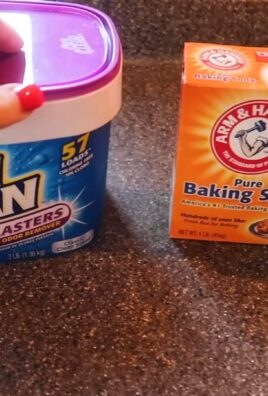
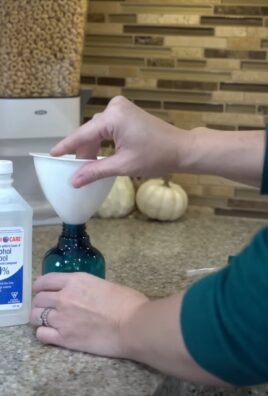
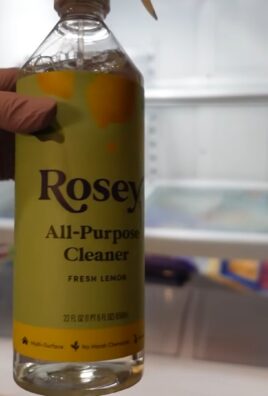
Leave a Comment